Dr. Phil Zeltzman’s Blog
10 deadly sins of untreated ACL tears
Pet owners sometimes ask what would happen if we didn’t address a torn anterior cruciate ligament (ACL). Dr. Google and random people will suggest conservative treatment as a perfectly valid option.
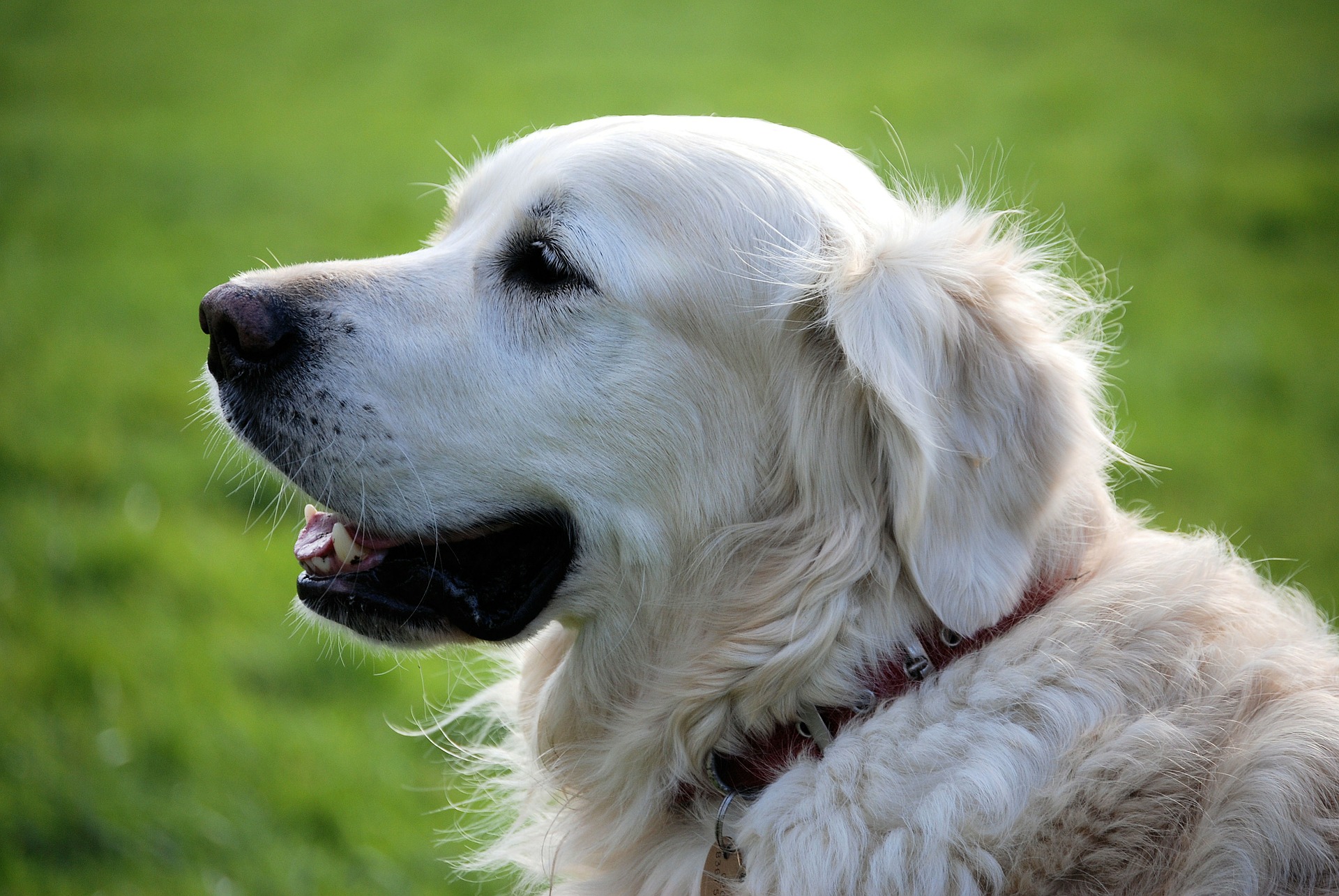
A non-surgeon colleague even wrote elsewhere that since people often don’t need surgery for an ACL tear, then we shouldn’t need it in dogs. Respectfully, this shows a basic misunderstanding of the differences in functional anatomy between dogs and humans. Let’s mention two:
. Humans are straight legged. Dogs always have their knees flexed when standing.
. The human tibial plateau angle is somewhere around 7 degrees. Dogs’ tibial plateau angles vary from around 20 to over 60 degrees, with a back-of-the-envelope average of 24 to 28 degrees in most of my tibial plateau leveling osteotomy (TPLO) patients.
How many reasonable, objective, ethical, honest reasons can you find to recommend conservative treatment as opposed to surgery?
Here are 10 consequences of untreated ACL tears:
1. Pain
Patients with a torn ACL are in pain.
Please remember that limping or favoring or babying a leg = pain.
Pets are not crazy! Holding the affected leg up or limping hurts less than putting full weight on the leg.
When the tear becomes older, pain might subside to some degree, but it stills hurts.
Another reason patients are limping is because the knee is unstable or wobbly.
2. Arthritis
We routinely notice during surgery that patients with long-standing (chronic) ACL tears have more arthritis than patients with a recent injury. This, in turn, leads to pain.
Patients with partial tears typically have less arthritis than patients with complete tears. Recent tears also regularly lead to less arthritis than older (chronic) tears.
Therefore, the sooner we perform the surgery, the better for the patient.
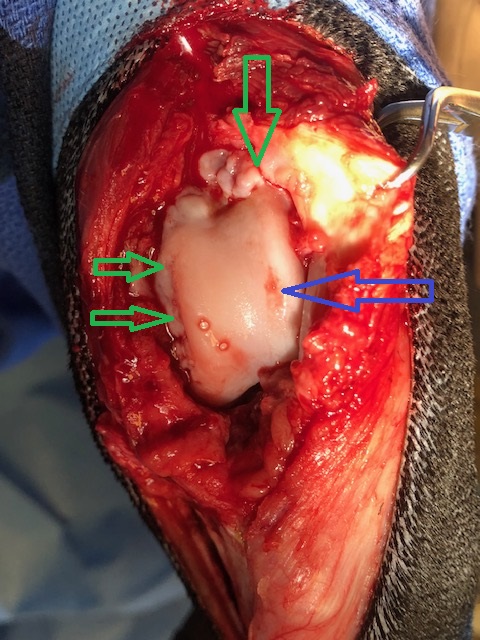
3. Scar tissue
Scar tissue is what we rely on after conservative treatment for an ACL tear. Experience proves that scar tissue alone is not enough to provide good function, at least in medium- and large-breed dogs.
Scar tissue is manifested by what we call the “medial buttress,” which can be a very prominent bulge inside a pet’s knee.
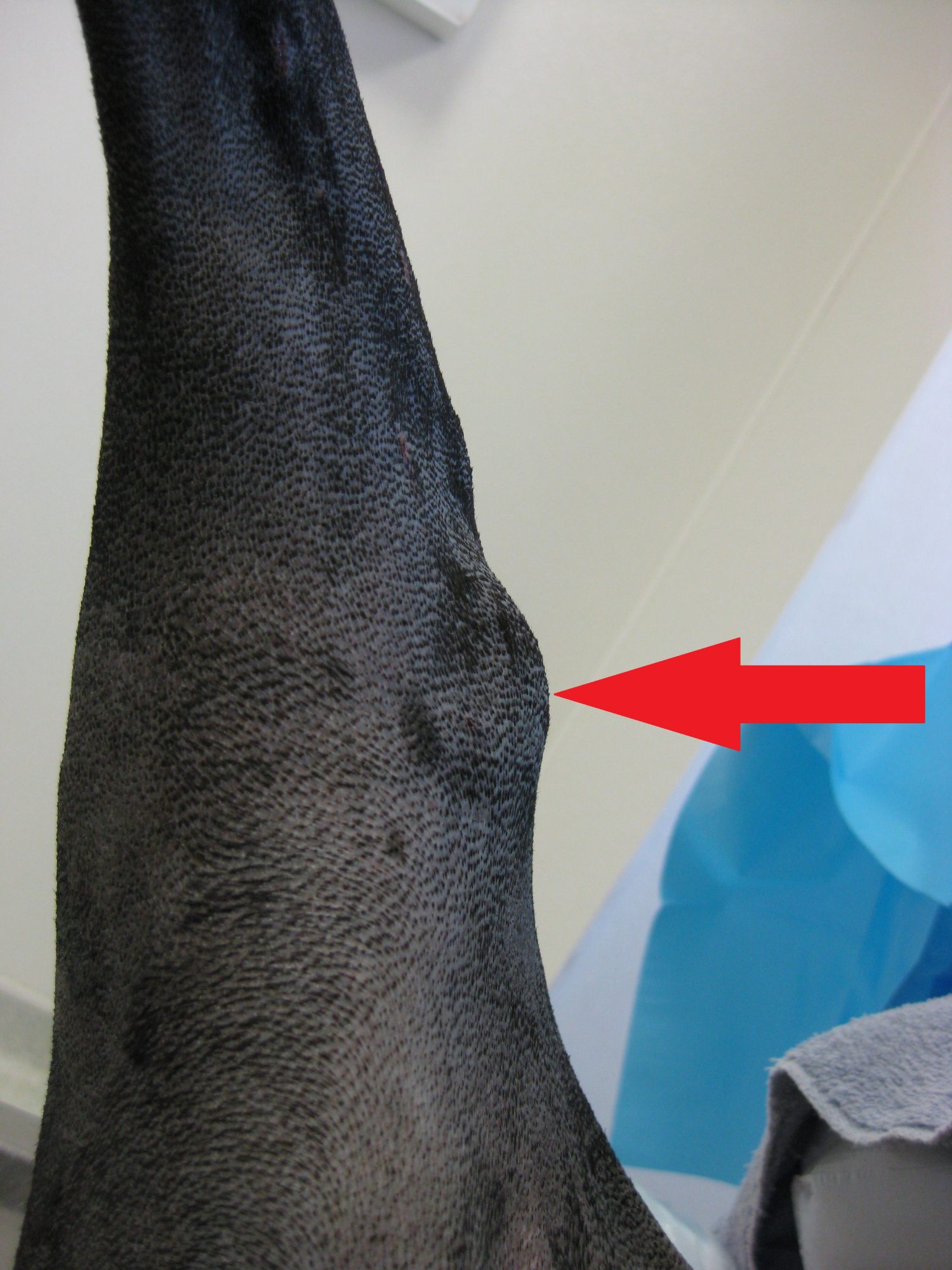
In turn, scar tissue leads to our next point.
4. Decreased range of motion
A long-term consequence of arthritis and scar tissue is a decreased range of motion of the knee.
Patients with older (chronic) ACL tears commonly experience a decreased range of motion. This might not matter much to a couch potato, but it will affect the performance of an active family pet or a working dog.
5. Muscle atrophy
Patients who favor a hind leg classically show various degrees of muscle atrophy because of poor use of the leg.
This can be assessed easily by measuring the circumference of the thigh with a simple tape measure.
6. Exercise intolerance
Obviously, a family pet or working dog will have a tough time running around with a sore knee.
Dogs with a torn ACL are reluctant to play or go for walks. Exercise intolerance or poor athletic performance classically leads to weight gain, because these pets often receive the same amount of food (and sometimes more, along with more treats).

7. Weight gain
A consequence of many of the above changes is decreased activity, which invariably causes weight gain.
This is a common observation in ACL patients. Unless you decrease your pet’s food intake to match the decrease in activity, weight gain is inevitable.
8. Opposite ACL tear
Arguably, weight shifting may lead to a tear of the opposite ACL. While this might be manageable in a yorkie or a cocker, it becomes a much bigger problem with a Labrador or a mastiff. Helping a 100 lb dog who has both ACLs torn at the same time is not easy!
9. Tear of the meniscus
Instability in the knee can lead to a tear of the meniscus (see picture below), which is a pad of cartilage in the knee. This can cause even more pain.
On the opposite, once the knee is stabilized, the risk of a tear of the meniscus is minimized.
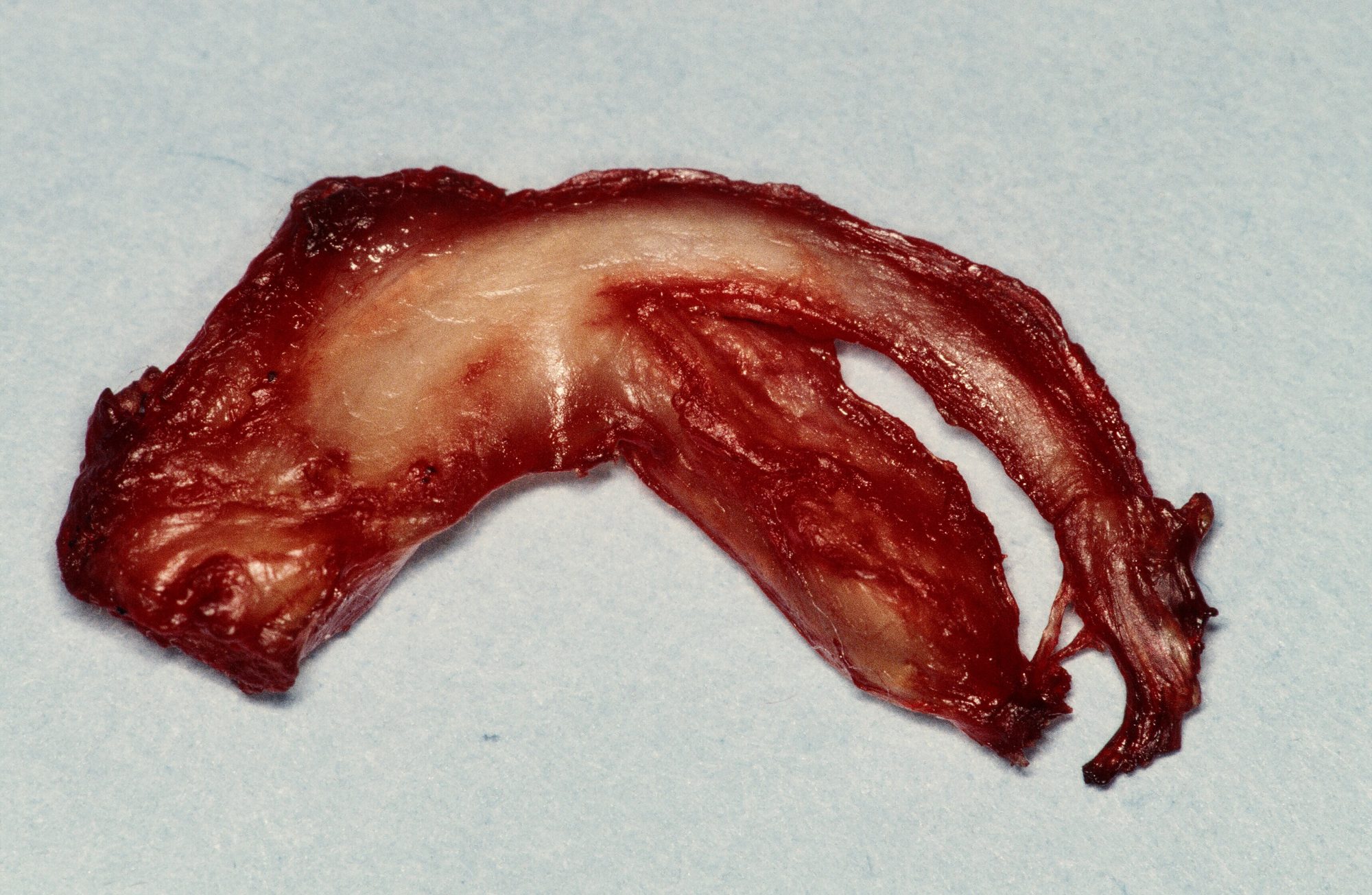
10. Distant problems
The changes in gait and posture can affect all three other legs, as well as the spine. Weight shifting may cause or exacerbate an orthopedic problem in another leg.
A doggie physical therapist told me once: “An ACL rupture is the beginning of a cascade of events in other body parts – joints, muscles – that we can’t forget.”
To a degree, some of the above changes can be used to “date” an ACL tear. From experience:
. A patient with a recent ACL tear classically is lame and painful.
A patient with an old (chronic) ACL tear typically presents with limping, pain, arthritis, decreased range of motion, muscle atrophy and weight gain. In surgery, we certainly see much more bone spurs in a dog with a chronic tear than with a recent tear.
From a surgeon’s standpoint, an ACL tear is a very fixable problem.
Sure, it is possible to live with a torn ACL. Certainly, it might be the only option if you absolutely cannot afford surgery.
ACL surgery has changed dramatically over the past few years. I now expect a return of at least 95 % of normal function in at least 95 % of my patients of any size after ACL surgery, of any type.
So it’s hard for me to believe that affected dogs, especially large ones, have (and will have) a good quality of life with an untreated ACL tear.
Phil Zeltzman, DVM, DACVS, CVJ, Fear Free Certified

Dr. Phil Zeltzman is a traveling veterinary surgeon in Pennsylvania & New Jersey. An award-winning author, he loves to share his adventures in practice along with information about vet medicine and surgery that can really help your pets. Dr. Zeltzman specializes in orthopedic, neurologic, cancer, and soft tissue surgeries for dogs, cats, and small exotics. By working with local family vets, he offers the best surgical care, safest anesthesia, and utmost pain management to all his patients. Sign up to get an email when he updates his blog, and follow him on Facebook, too!
Are X-rays to diagnose an ACL tear a waste of money?
Pet owners regularly question why we take X-rays to diagnose an ACL tear. After all, an ACL is “soft tissue”, and you can’t see it on X-rays. This is actually a very valid point. So why bother? Is it a waste of money? Are we taking loving pet owners for a ride?
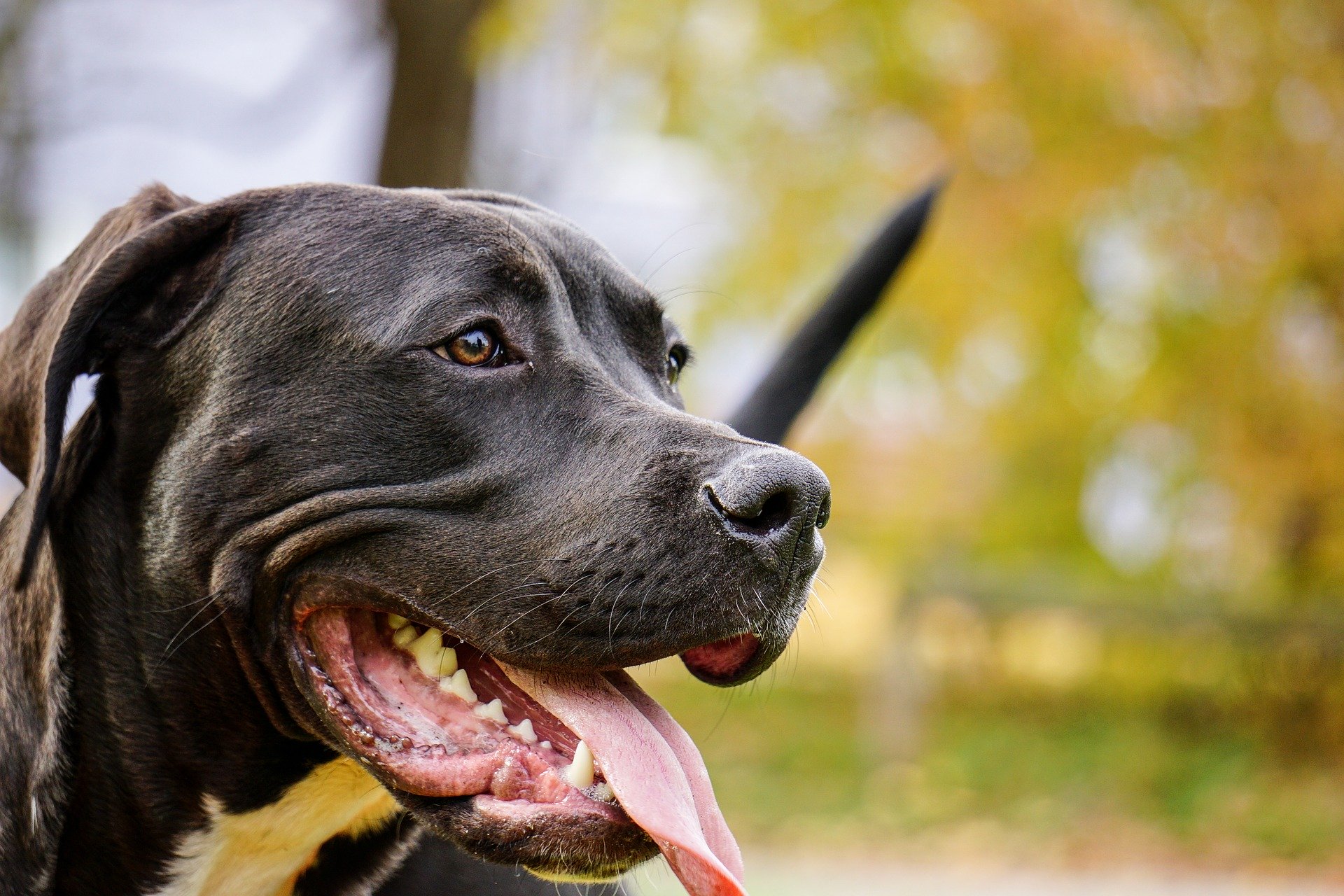
The story of Zeus, a 3 year old pit bull, is a perfect way to explain why it is so important to take X-rays before ACL surgery.
Reasons include:
. An experienced family vet or a surgeon can actually diagnose an ACL tear on X-rays. Sure, we can’t see the ACL, but we can see the consequences of the tear: too much fluid in the joint, arthritis, displacement (or dislocation) of the thigh bone and the shin bone etc.
. In order to do a TPLO or a TTA, we need to take measurements to plan the entire surgery, so X-rays are mandatory. By the way, the X-rays must be in a very specific position, and require sedation. If the leg it crooked before the patient is awake or struggling, the measurements will be off, and the outcome of the surgery may be affected.
. Before any type of repair, we need to make sure that there isn’t something else going on. It could be something benign, like a fracture. This was recently the case of Ellie, a 6 month old English Bulldog, who was thought to have a torn ACL. A simple X-ray clearly showed that she had in fact a fracture of the shin bone (tibial crest avulsion). Note how the fracture piece (red arrow) is lifted off its normal position (green arrow).
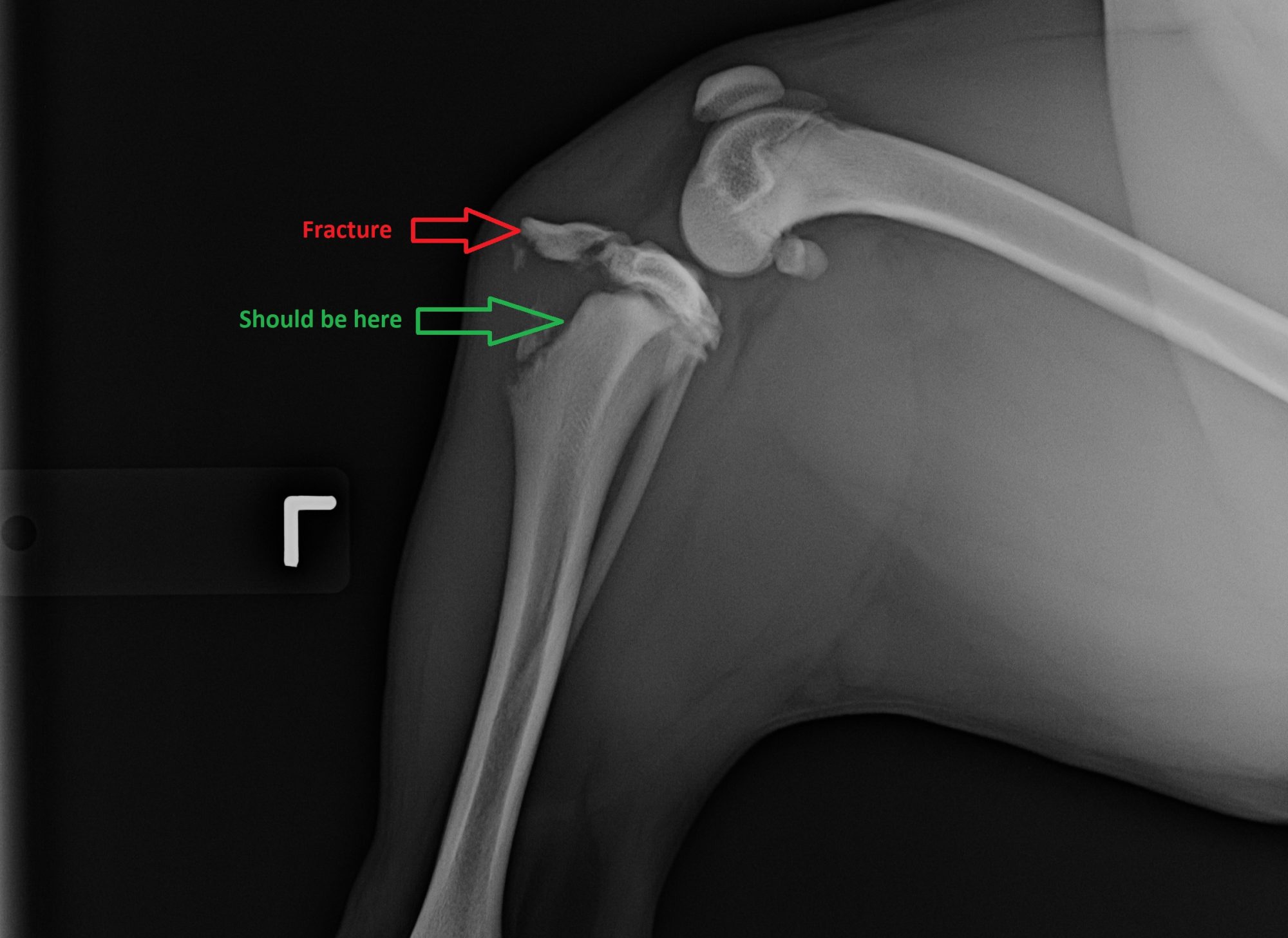
Or it could be something much worse, as in the case of Zeus.
In December of 2018, the 3 year old pit bull was limping on the left back leg. X-rays showed subtle changed. A board-certified radiologist thought it could be a partially healed fracture of the shin bone and/or a torn ACL.
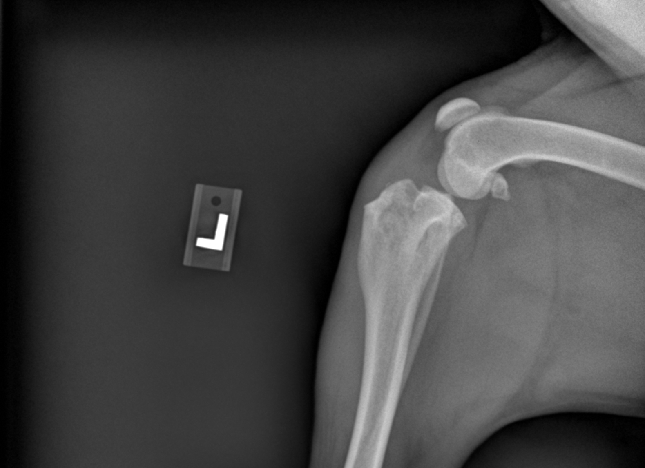
Zeus’ owner, wishing to pursue surgery, found me on my website, and asked me to do a TPLO. I referred him to a clinic where I frequently do TPLO surgeries. Surgery was delayed for various reasons.
On March 6, 2019, the day of surgery, the knee appeared unusually swollen. We repeated X-rays to be safe. Surprise… this was not at all an ACL tear. The shin bone had been literally eaten away by, most likely, bone cancer.
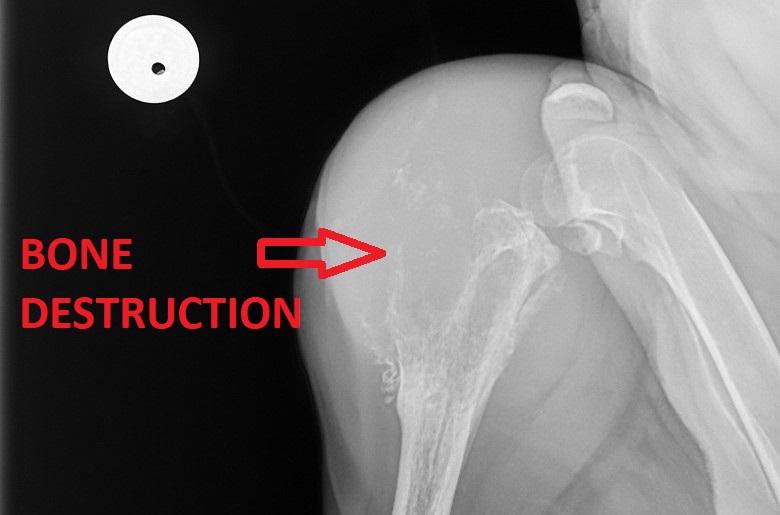
I called the owner and explained the findings. Unfortunately, the best option was amputation. Initially shocked, the owner accepted. Surgery went well and Zeus went home.
On March 7, 2019, the day after surgery, the phone update was good: “Zeus is doing well. He is getting around well three-legged. In fact, he had been only using 3 legs for a couple of months. He is eating and drinking small amounts. He has gone outside and urinated.”
Here is a video showing what a trooper Zeus was during his recovery (yes, he should have been on a leash…). He still has the Band-Aid over the incision. And he’s able to climb a few steps.
On March 13, biopsy results were back. Rather than the most common bone cancer (osteosarcoma), the cancer was hemangiosarcoma. This is an aggressive cancer of the blood vessels – in Zeus’ case, of the bone.
A few months went by, and Zeus enjoyed a happy life. Eventually, he started to limp on the right front leg. Initially, it was suspected that shifting weight to the front legs may have been responsible. Pain medications were started in August. “Zeus seems to be feeling much better since starting pain meds daily.”
Sadly, things progressed. Zeus’ family vet wrote in the medical record dated September 3, 2019: “Large visible swelling over right shoulder. Zeus is obviously in a lot of pain.”
X-rays showed that bone cancer, most likely, had spread to the arm bone (humerus). Notice how the bone looks moth-eaten.
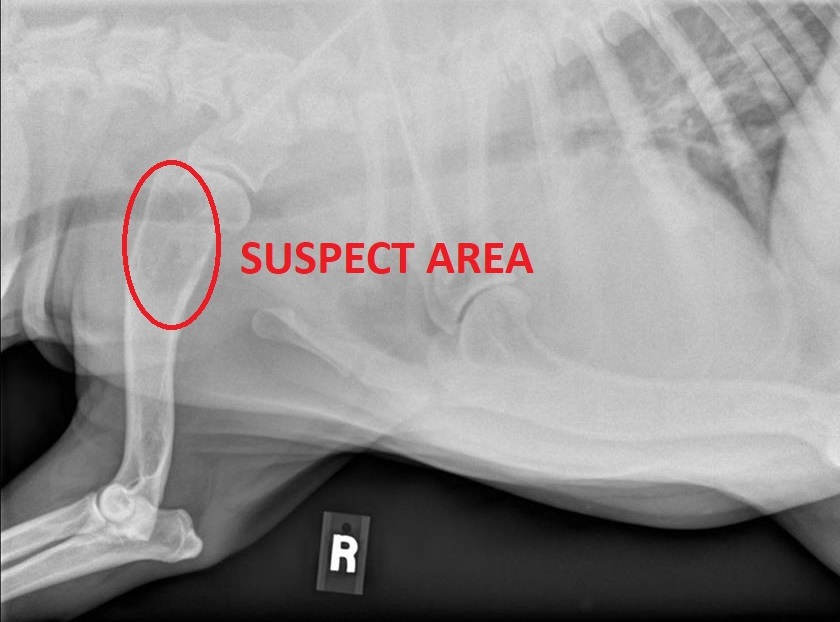
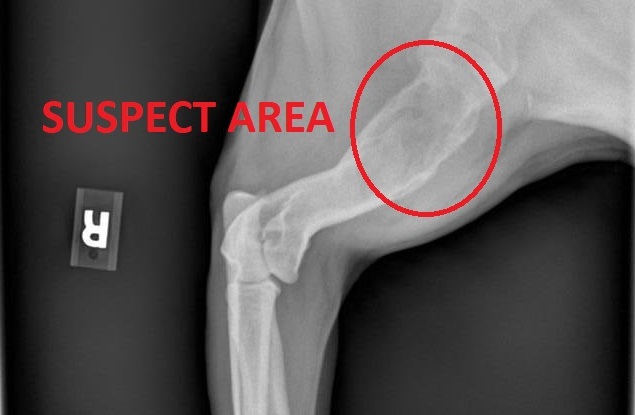
That day, Zeus was humanely euthanized.
He survived for 6 months after the amputation.
This could be the end of this blog. But I decided to call Zeus’ owner to see how he felt about this whole experience.
His comments: “Sure it was rough at times, but Zeus was happy until the end. I feel that I did everything I could for my dog. I probably did more than most people would have. But Zeus was happy and comfortable. We went to the park every day. He loved people watching. I have no regrets.”
As I always say, when we deal with a cancer patient, I’d rather have 6 months of happiness than 6 years of misery.
Zeus is a perfect illustration of that concept. Sure, amputation is an invasive surgery, but dogs bounce back very well from the surgery. They don’t care about having 3 legs. They care about being comfortable.
Zeus lived happily for 6 months after his surgery. To his owner, these 6 extra months were priceless.
Phil Zeltzman, DVM, DACVS, CVJ, Fear Free Certified

Dr. Phil Zeltzman is a traveling veterinary surgeon in Pennsylvania & New Jersey. An award-winning author, he loves to share his adventures in practice along with information about vet medicine and surgery that can really help your pets. Dr. Zeltzman specializes in orthopedic, neurologic, cancer, and soft tissue surgeries for dogs, cats, and small exotics. By working with local family vets, he offers the best surgical care, safest anesthesia, and utmost pain management to all his patients. Sign up to get an email when he updates his blog, and follow him on Facebook, too!

